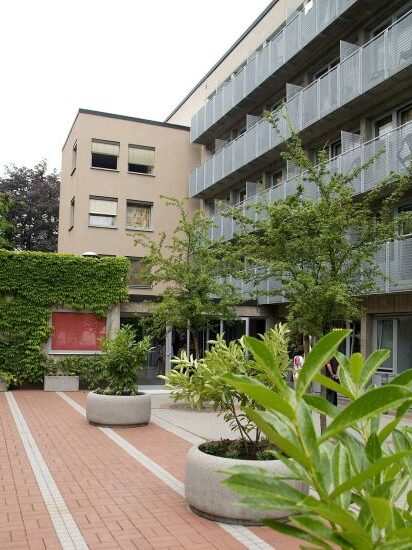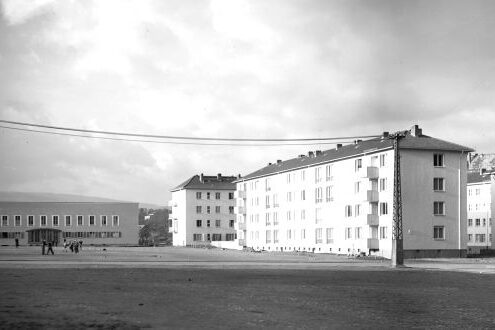Wiesbaden Youth Hostel
In September 1963, the new Wiesbaden Youth Hostel building in Blücherstraße was inaugurated. Its history had begun in the 1920s in an extension to the school in Lahnstraße, where initially only a few beds were available. In the following decades, the youth hostel had to move several times due to lack of space until it finally received its new building near Elsässer Platz.
The birth of the German Youth Hostel Association dates back to 1909; the founder of the youth hostel movement was the teacher Richard Schirrmann. Three years later, the world's first youth hostel was founded at Altena Castle (in the Sauerland region). By 1932, there were already 2,123 youth hostels in Germany with more than 4.5 million overnight stays. The German Youth Hostel Association Hessen e.V. has existed since July 1947 and operated 31 of its own and three partner youth hostels in 2012. This also includes Wiesbaden Youth Hostel at Blücherstr. 66-68.
In 1920, a Wiesbaden teacher founded the city's first youth hostel in an extension to the school in Lahnstraße. Due to the occupation of Wiesbaden by French troops, the number of overnight stays in the first year was still low at 300; 20 beds were available in the building. The poor economic situation at the beginning of the 1920s even led to the temporary closure of the hostel; it was not until the end of 1923 that it was able to reopen. Now more and more guests came every year, so that by the end of the 1920s, 7,500 overnight stays were counted and the rooms at the school were no longer sufficient.
After the end of the occupation of Wiesbaden in 1930, the youth hostel was able to move to a vacant building in Gersdorffstraße (today Willy-Brandt-Allee), where 170 beds and 30 emergency dormitories were available.
In 1935, the youth hostel found another new home in the former Dornblüth Sanatorium in Händelstraße, which was renovated and further extended the following year. In 1939, it comprised 28 heated dormitories, 370 beds with blankets, 275 of which were for permanent stays. There were also 50 emergency dormitories with blankets and four heated day rooms. After the Second World War, the site was sold by the city of Wiesbaden to the federal government and became the first headquarters of the Federal Criminal Police Office.
After an interim solution in the new "Haus der Jugend" building (1952) on Elsässer Platz, the current building was constructed in the northwest of the city at Blücherstraße 66, which was inaugurated at the beginning of September 1963. The neighboring building at Blücherstraße 68 (also built in 1963) was leased by the fbw Landesjugendamt Hessen (training center for social professionals) from 1964 and was returned to the use of the DJH-Landesverband Hessen e.V. in 2000. In 2006, this building was modernized (guest rooms, seminar and conference rooms, reception area), followed by the redesign of the outdoor play area in 2008.
Over 33,000 overnight stays were recorded in 2011. In addition to music groups and choirs, the (international) guest clientele of the youth hostel (202 beds in 2- to 6-bed rooms, 14 rehearsal and day rooms, variable dining room, a leisure area with volleyball and soccer pitch, basketball hoop and 3 table tennis tables) is made up of school classes, sports clubs, families, hikers and seminar groups.
In 2012/2013, the original first youth hostel building underwent extensive modernization. All rooms were equipped with their own shower and WC and given a new look. Some of the existing day rooms were enlarged and equipped with modern event technology. A new staircase with elevator and an almost 11m long bridge, which now connects the two buildings, were added. The extension and the bridge will be officially inaugurated in September 2013.
Literature
100 Years of Youth Hostels 1909 - 2009: Beginnings - Changes - Retrospectives and Prospects, Essen 2009.

